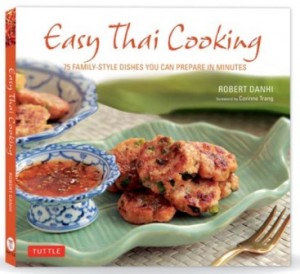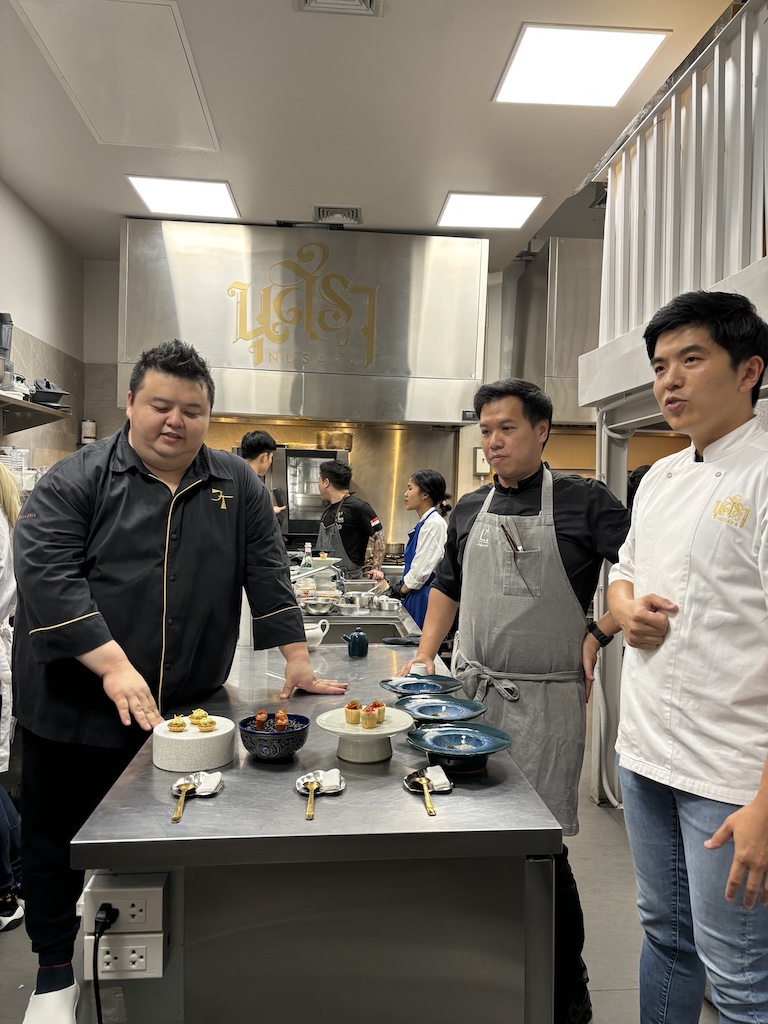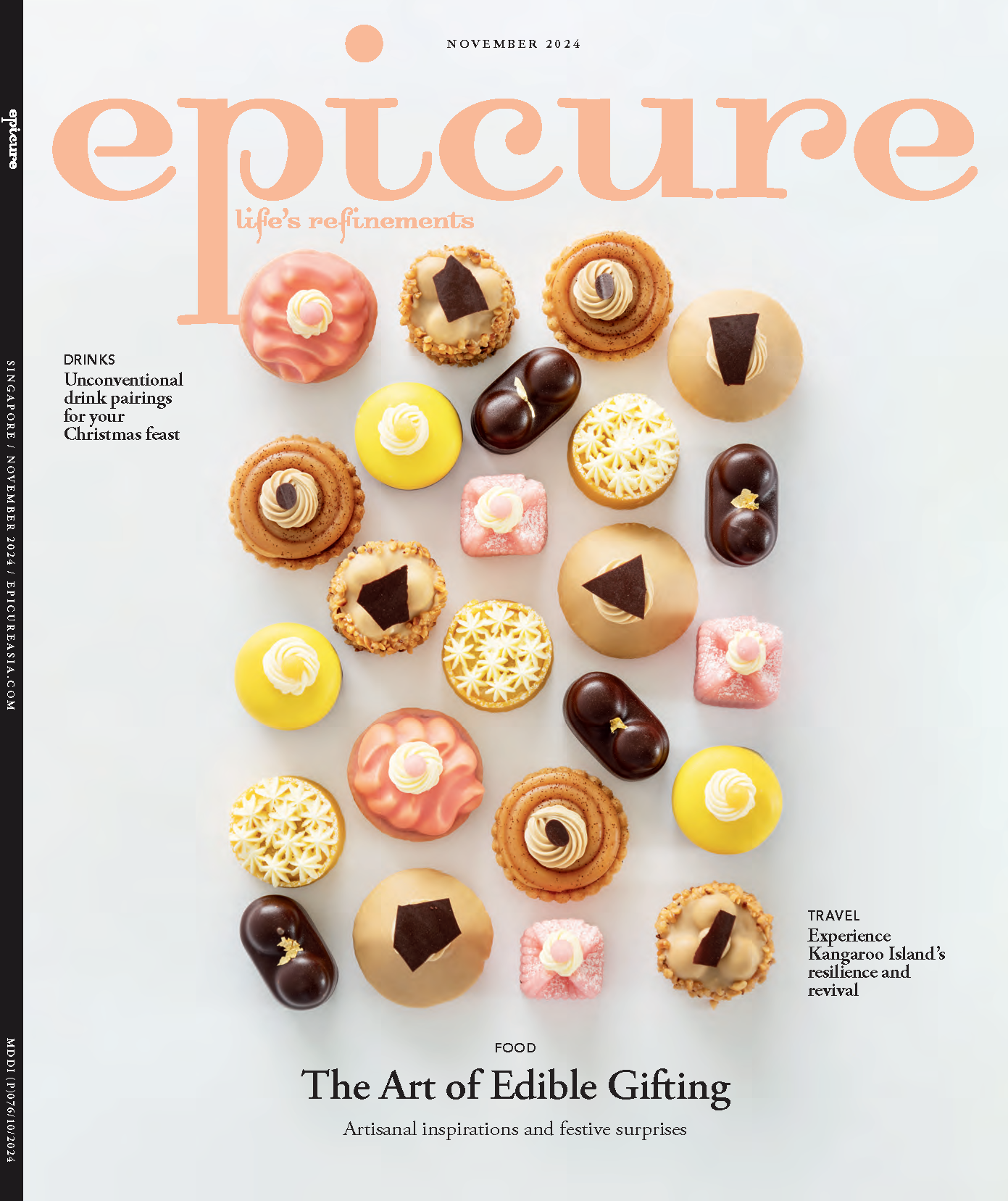Spotlight on: Robert Danhi
One might be inclined to doubt this American’s credibility as a specialist on Southeast Asian cuisine, but the author of Southeast Asian Flavours and Easy Thai Cooking tells epicure why he deserves to be taken seriously.
What sparked your love for Southeast Asia?
My wife first brought me to Malaysia 23 years ago. To say I fell in love with both her and the country is putting it lightly. I started to explore Thailand, Vietnam and Cambodia and eventually the whole of Southeast Asia. In the U.S. where I’m from, people don’t talk about food half as feverishly as Asians do in this region. Ask anyone and they’ll have their own list of places they think are worth visiting. They may not always be right, but they will care enough to have an opinion.
 Why did you choose to specialise in the cuisines of Thailand, Vietnam, Malaysia and Singapore instead of focusing on just one?
Why did you choose to specialise in the cuisines of Thailand, Vietnam, Malaysia and Singapore instead of focusing on just one?
As a teacher and food consultant I can teach more by relating to different cuisines. If I only knew about Thai food, I’d only know about Thai palm sugar. But if I also understand gula melaka (Malaccan palm sugar) and gula jawa (Indonesian palm sugar), I can compare, contrast and substitute. When I talk about shrimp paste, someone from Singapore might say belacan, but there’s also kapi from Thailand, and Vietnamese mam ruoc. They’re all made from salted and fermented shrimp, but I know which are drier, moister, more pungent and which ones are interchangeable with others—that’s what makes me a specialist. But I can spend the next 30 years cooking all day long and still only know so much. I never said I know it all, no one does.
What is it about each cuisine that you like?
I like the intensity of Thai food. Miang kum, made by dry frying coconut with dried shrimp, chilli and roasted peanuts, is such a taste bud tantaliser it feels like a party in your mouth. To me, Vietnam is to Southeast Asia, what Japan is to Northeast Asia. Their cuisines are so fresh and light, many think they are bland but they are really elegantly subtle. I like how Malaysian cuisine is so diverse. I don’t like the term melting pot, I prefer ‘stir-fry’ because they come together but each still has its own unique identity, whether it’s the street stall mamak or the intricate Peranakan dishes in Penang. As for Singapore, I’ve learnt so much because I’ve seen how flavours are translated with integrity. If something were to be adapted and modernised here, it would still taste authentic.
 Are the Thai locals receptive to farangs (westerners) when it comes to teaching them about their cuisine?
Are the Thai locals receptive to farangs (westerners) when it comes to teaching them about their cuisine?
You are a product of your experience, not your ethnicity. I teach at the Culinary Institute of America, and a Thai student of mine said I was making a curry wrong. I asked who made her an authority on Thai food and my students said, “Well she’s Thai.” Sure, that sounds logical but how many people from San Francisco can make cioppino, the fish stew that originates from there? Would it be fair to say, “But you’re from California!” I’ve studied Thai food for almost two decades and I will encounter sceptics. To whom I say: let me cook for you. I may not be the best but I am respectful and if I don’t know something, I’ll tell you I don’t know.
Even David Thompson, who’s considered an authority on Thai cuisine received flak when he opened Nahm. Did you agree with the criticism?
I think David was misquoted. He might have said something about coming to Thailand to help preserve Thai food. But what’s wrong with that? He reads and writes the language and cooks the cuisine. You know he really respects the culture or he wouldn’t have dedicated 30 years of his life to it. He didn’t mean it as he needed to teach people but you know what? Maybe he does need to teach sometimes. It doesn’t matter where you’re from, if you know the cuisine and know it well, I want to learn from you.
As a culinary consultant, how do you think Thai cuisine has evolved over the years?
In just 20 years, I’ve found Thai food to be much sweeter than it’s used to be. If you were to check the annual consumption of sugar in that country, you’ll see figures have gone up. Most dishes have also lost some of their regional character due to communication and transport. Information gets exchanged more easily. When before you could only get som tam (spicy salad) in the west and central areas, you can find them everywhere now, in so many different variations. I even managed to find kanom jeen, a traditionally Isaan dish of fermented rice noodles, in Ko Samui.
Would you consider yourself more of a traditionalist when it comes to cooking Thai cuisine?
I think there is a lot to be said about authenticity. To first create new recipes, you need to understand the classics. It’s an honour for me to cook Thai food, and if I’m going to change it, I first need to know it. There’s a recipe in Easy Thai Cooking for tamarind noodles instead of pad thai because it didn’t have pickled radish. Food is constantly evolving and I am completely open to contemporary interpretations if they are identified as such.
4 things you didn’t know about Robert Danhi:
My first experience with durian was: love at first bite.
The three most crucial ingredients for the recipes in this book are: nam prik pao (chilli paste), coconut milk and fish sauce.
Some of the best Thai food I have eaten out of the country was at: Lotus of Siam in Las Vegas. Chef Saipin Chutima whips up an amazing northern-style larb (Laotian meat salad) that is moist and flavourful.
When in Thailand, everyone should try: the Thai omelette at Yaowarat, Bangkok’s Chinatown. The hawker fries the eggs with lemongrass and galangal so it’s incredibly aromatic.
Thai food in three words: is perfectly balanced.
Easy Thai Cooking retails at $22 and is available at most major bookstores.
SHARE

















 SUBSCRIBE
SUBSCRIBE